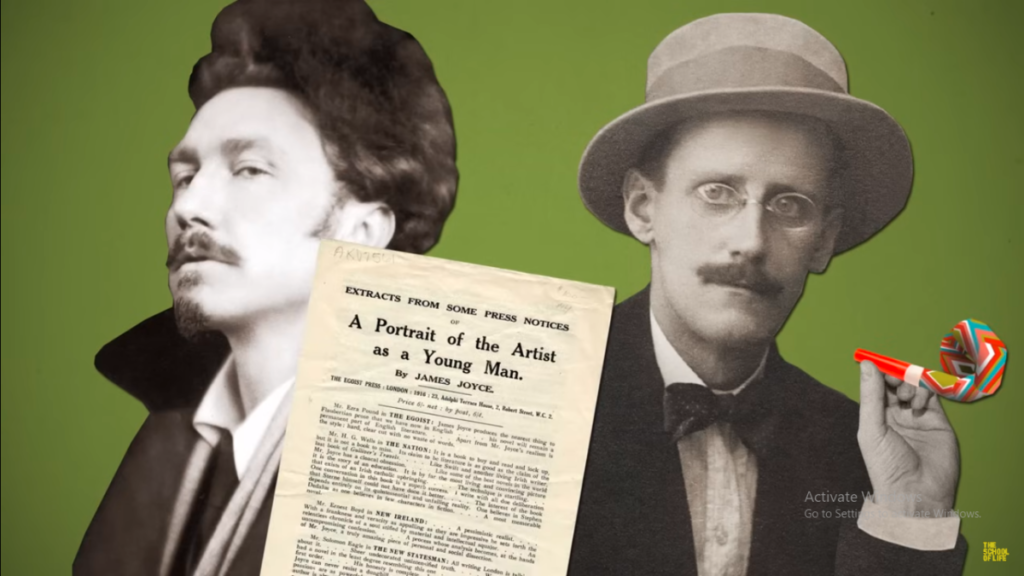James Joyce, an Irish literary icon, is a towering figure in modernist literature. His profound impact on the literary world reverberates through the pages of his seminal works, including “Ulysses” and “A Portrait of the Artist as a Young Man.” Joyce’s narrative prowess, characterized by innovative techniques and intricate wordplay, has left an indelible mark on literature enthusiasts and scholars. “Joyciano” encapsulates the essence of Joyce’s literary style and thematic explorations, serving as a gateway to the rich tapestry of his works. Through the lens of “Joyciano,” readers are invited to delve into the labyrinthine depths of Joyce’s narratives, where every word is imbued with layers of meaning and significance.
The Life and Times of James Joyce
Born on February 2, 1882, in Dublin, Ireland, James Joyce led a life steeped in the cultural milieu of his homeland. Raised in a middle-class family, the political and social upheavals of early 20th-century Ireland influenced Joyce’s formative years. His experiences in Dublin provided fertile ground for his literary endeavors, serving as a backdrop for many of his works.
A Journey Through Joyce’s Literary Landscape
Joyce’s literary oeuvre is a labyrinthine exploration of human consciousness and the intricacies of the human condition. His groundbreaking narrative techniques, notably stream of consciousness, revolutionized how authors approached storytelling. “Ulysses,” often hailed as his magnum opus, follows the meandering thoughts and experiences of its characters over the course of a single day in Dublin. Through his unparalleled mastery of language, Joyce crafts a vivid tapestry of emotions and experiences, inviting readers to delve into the depths of the human psyche.
Unraveling the Themes of Joyce’s Works
Central to Joyce’s literary canon are themes of identity, existentialism, and the quest for meaning in an increasingly fragmented world. In “A Portrait of the Artist as a Young Man,” Joyce traces the journey of Stephen Dedalus as he grapples with his evolving sense of self against the backdrop of Irish society. Through Dedalus’s introspective odyssey, Joyce explores the tension between individuality and societal expectations, laying bare the complexities of the human experience.
The Enduring Influence of Joyciano
Joyce’s legacy extends far beyond the confines of his era, permeating contemporary literature and popular culture. His innovative narrative techniques continue to inspire authors across the globe, shaping the landscape of modern fiction. From the experimental prose of Samuel Beckett to the lyrical musings of Virginia Woolf, Joyce’s influence reverberates through generations of writers, cementing his status as a literary luminary.
Celebrating Joyce: Commemorating a Literary Giant
Each year, devotees of Joyce’s work gather in Dublin and cities worldwide to celebrate Bloomsday, commemorating the events of “Ulysses.” From readings and performances to pub crawls in the spirit of Leopold Bloom, Bloomsday serves as a testament to the enduring allure of Joyce’s writing. Academic institutions and literary societies also continue exploring and dissecting Joyce’s works, ensuring his legacy remains alive and vibrant for future generations.
FAQs: James Joyce and Joyciano
1. Who is James Joyce?
James Joyce (1882-1941) was an Irish author renowned for his contributions to modernist literature. His notable works include “Ulysses” and “A Portrait of the Artist as a Young Man.” Joyce’s innovative narrative techniques and exploration of complex themes have solidified his legacy as one of the most influential writers of the 20th century.
2. What is “Joyciano”?
“Joyciano” is a term that encapsulates the essence of James Joyce’s literary style and thematic explorations. It describes Joyce’s innovative narrative techniques, intricate wordplay, and profound thematic depth. “Joyciano” provides a lens through which readers can explore the rich tapestry of Joyce’s works and appreciate his contributions to literature.
3. What are some key themes in James Joyce’s works?
James Joyce’s works often explore themes such as identity, existentialism, the human condition, and the complexities of Irish society. His characters grapple with issues of self-discovery, societal expectations, and the search for meaning in a rapidly changing world. Through his writing, Joyce delves into the intricacies of human experience with unparalleled depth and nuance.
4. Why is James Joyce considered a literary icon?
Joyce is considered a literary icon due to his groundbreaking contributions to modernist literature. His innovative narrative techniques, including stream-of-consciousness, revolutionized the way authors approached storytelling. Joyce’s profound exploration of complex themes and his mastery of language have earned him acclaim from scholars and readers alike.
5. What is Bloomsday, and why is it significant?
Bloomsday is an annual celebration held on June 16 to commemorate the events of James Joyce’s novel “Ulysses,” which takes place in 1904. Participants often engage in readings, performances, and themed events inspired by the story. Bloomsday serves as a celebration of Joyce’s literary legacy and a testament to the enduring impact of his work on popular culture.
6. How can I delve deeper into Joyciano’s literature?
To explore Joyciano’s literature further, consider reading James Joyce’s major works, such as “Ulysses” and “A Portrait of the Artist as a Young Man.” Additionally, numerous scholarly analyses and critical essays are available that delve into Joyce’s themes, narrative techniques, and cultural significance. Participating in Bloomsday events or joining literary discussions can also enhance your understanding of Joyciano literature.
In Conclusion:
James Joyce occupies a unique and revered position in the pantheon of literary greats. His unparalleled ability to capture the intricacies of the human experience continues to captivate readers and scholars alike. Whether embarking on a journey through the labyrinthine streets of Dublin in “Ulysses” or pondering the existential quandaries of “A Portrait of the Artist as a Young Man,” Joyce invites us to delve into the depths of our own consciousness. As we navigate the Joyciano landscape, we are reminded of the enduring power of literature to illuminate the human condition and transcend the boundaries of time and space.
Alas Read: Justin Billingsley Connecticut

